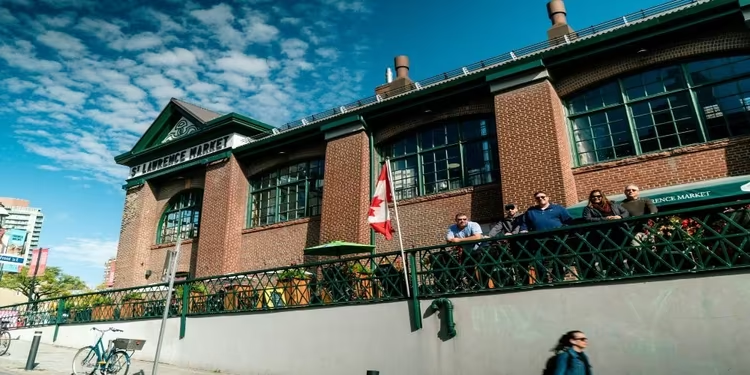My Bookings
Please Enter Your Booking Code To Find Your Booked Tour!

Interesting Facts about Union Station Toronto
Table of Contents
The Origins of Union Station
Toronto Union Station has a long and layered history. The first Union Station was built in 1858 by the Grand Trunk Railway. It also served the Northern Railway and Great Western Railway, making it one of Canada’s earliest shared train stations. This original structure was small and simple, but it marked the beginning of Union Station’s central role in the city.
As Toronto grew, a larger station was needed. The second Union Station had an opening in 1873. It was located on Front Street between York and Simcoe. Designed in an ornate style, this station was a grand upgrade but eventually became overcrowded and outdated.
The present Union Station was built to meet the city's expanding transit needs. Construction began in 1914, though delays pushed the opening to 1927. Since then, it has become a vital transportation hub in downtown Toronto, connecting rail, subway, bus, and airport routes all under one roof.
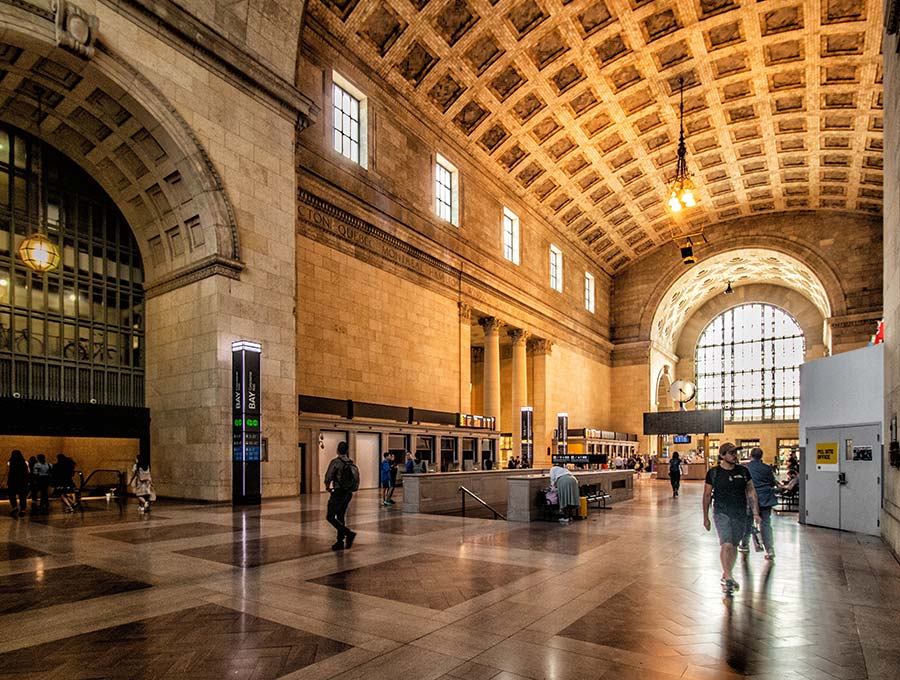
A Beaux-Arts Masterpiece in Downtown Toronto
The present Union Station is a stunning example of Beaux-Arts architecture, a style known for its symmetry, arches, and grand scale. The building was designed to impress, with soaring ceilings, tall columns, and elegant details throughout. It was built using Indiana and Queenston limestone, which gives the station its warm, classic look.
The original plan included a wide, ceremonial street called Federal Avenue, meant to stretch north to Queen Street. Although that vision was never fully realized, the station still stands as a symbol of bold architectural ambition in downtown Toronto.
At its grand opening in 1927, the Prince of Wales famously said, “You build your stations like we build our cathedrals.”
Discover Toronto’s best architecture on our guided walking tour
Royal York Connection & Underground Wonders
Union Station is a gateway to a world beneath the city. A historic underground passage links the station to the Fairmont Royal York Hotel, offering guests easy access since the hotel opened in 1929. This hidden walkway remains in use today and is part of Toronto’s larger PATH network, the underground system that connects buildings across downtown Toronto.Beneath the surface, Union also links to the subway, streetcar lines, and a lesser-known underground streetcar loop. It’s a curved track that helps manage traffic but was built smaller than needed. Near the platforms, visitors can also admire public art like Zones of Immersion, a large glass installation filled with haunting human figures and poetic text.
Surprising Features of Union Station Toronto
Toronto Union Station is full of surprises, even for regular commuters. Its massive stone columns, which greet visitors at the main entrance, each weigh 75 tons.
One of the most unexpected features in its history was a rooftop shooting range. Opened in 1927, it was used by the Canadian National Railway and Canadian Pacific Railway police as part of the CNRA handgun club. The range was even opened to the public before being shut down in 2008.
Inside, early 20th-century travellers enjoyed luxurious amenities. There were smoking rooms, a barbershop, showers, and quiet lounges for men and women.
Experience skyline views and a harbour cruise on our Scenic Night Tour
War Brides & Wartime Legacy
During World War II, Toronto Union Station played a touching and important role in Canadian history. In 1944, a Red Cross reception centre was set up inside the station to welcome returning soldiers and their families.
The effort became known as “Operation Daddy,” a large initiative to reunite families after the war. Between 1944 and 1947, more than 45,000 war brides and 21,000 children arrived in Canada through Union Station. Most of these women were British, but others came from France, the Netherlands, Belgium, and Italy.
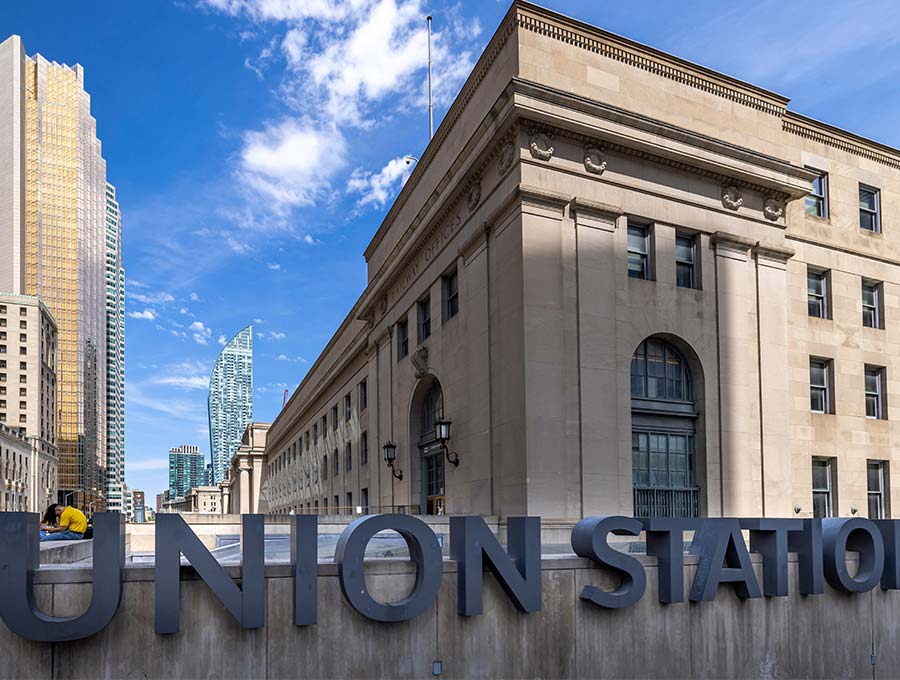
The Train Shed and Expansion Through the Ages
One of the most iconic features of Toronto Union Station is its large train shed. This steel-and-glass structure covers the platforms and protects passengers from the weather. Over the years, it has seen many changes as GO Transit and VIA Rail expanded their services.
In 2021, Union Station unveiled a modern Bay Concourse, increasing space and comfort for travelers. This new area connects to platforms, retail shops, and the city’s PATH network. Improvements along Bay Street also helped ease passenger movement and added more entrances.
See old and new Toronto on our Small Group Tour with CN Tower access
Diversity & Labour History: The Red Caps
Union Station was once home to a group of workers known as the Red Caps. These were Black railway porters who helped passengers with their luggage. They came from across Canada, the United States, the Caribbean, and even as far as Wales and the Dutch East Indies.
Many of these men were highly educated, holding degrees in fields like science, medicine, and business. But because of racism and limited job opportunities, they were often not allowed to work in their trained professions.
The story of the Red Caps is an important part of Canada’s labour and human rights history. It reminds us how Union Station is not just a place of travel, but also a place of social change.
From Mail to Modern Metrolinx
Before it became a major commuter hub, Toronto Union Station played a key role in Canada’s postal system. In the early 1900s, mail trains arrived regularly, and the station acted as a postal hub for the city. This continued until the 1970s, when mail sorting moved to Mississauga to be closer to the airport and new mechanized systems.
Today, Union Station is still evolving. The Union Station Enhancement Project, led by Metrolinx, is upgrading tracks, platforms, and passenger areas. These changes are designed to handle up to 80 trains per hour, making it one of the busiest transportation hubs in North America. The goal is to improve service while protecting the station’s historic features.
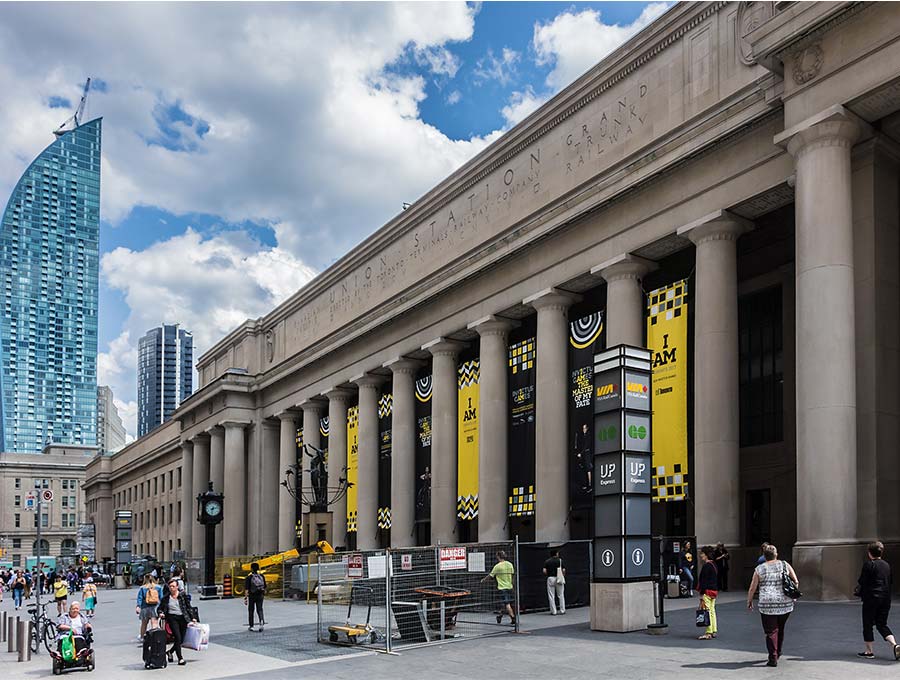
Conclusion
Toronto Union Station is more than stone columns and train schedules—it’s a living, breathing piece of history. From its early days serving the Grand Trunk Railway to becoming Canada’s busiest transportation hub, the station has seen generations of travelers, workers, and dreamers pass through its halls.
Its architecture, stories, and hidden details remind us that Union Station is not just a place to catch a passenger train—it’s a monument to Toronto’s past and a bridge to its future. As new concourses rise and platforms expand, the station continues to evolve without losing its roots.
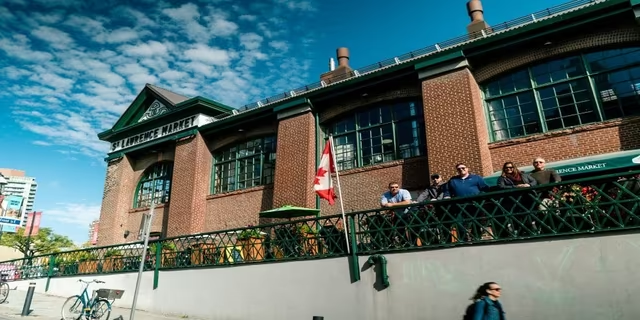
Best of Toronto Walking Tour
4 Hours
Join us on the best way to experience Toronto on foot on our Best of Toronto Walking Tour. You won’t want to miss this incredible sightseeing adventure!

Casa Loma: The Ultimate Castle Experience
1.5 Hours
Explore the majestic Casa Loma with a knowledgeable guide, delving into its rich history and grand architecture.
Related Blogs

Best Time to Visit Toronto
Embark on a seasonal journey through Toronto's dynamic charm! Revel in vibrant summers and enchanting winters, uncovering the city's top attractions in every season.

Ammara Younas

Hidden Gems In Toronto
Book now for an immersive adventure, curated to unveil the unique charm and captivating stories that make Toronto an unforgettable destination.
.webp%3Falt%3Dmedia%26token%3D34ede1cf-56c3-4ba0-bc9a-d5608053c9c0&w=128&q=75)
Aleena Mehmood
Related Tours
Quick Links
Book your Tour
Get in Touch
Toll Free
1-888-961-6584
Local
1-289-271-9767
© 2026 See Sight Tours. All Rights Reserved.
1-888-961-6584

